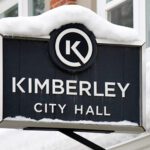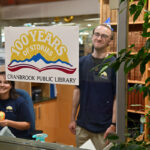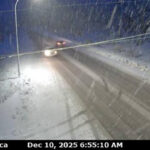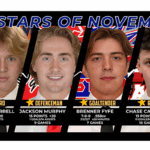Home »

Council talking turkey as birds spread through village
By Stephanie Stevens
It is nowhere near Thanksgiving, but there was still a lot of turkey talk at the Village of Radium Hot Springs’ regular council meeting January 9.
Council received a letter signed by 28 Radium residents requesting action be taken in regards to the increasing wild turkey population in the village.
“These fowl are causing damage to our property, becoming a big nuisance and increasing in number,” the letter stated.
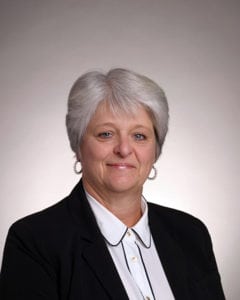
While the group gathered were not an official delegation, Mayor Clara Reinhardt chose to open up a discussion with them to better share ideas.
In years past, wild turkeys were lower in numbers and those that were around, were located mainly in north Radium across the gully.
“When we did the 2013 wildlife survey, there were really none in town, and now we have 49,” said Reinhardt, adding because wild turkeys are not native to B.C. they have nothing to go by for dealing with them when they become an issue.
Chief administrative officer Mark Read said the only option he was offered by Irene Teske of B.C. Fish and Wildlife was a cull.
“We would have to hire a contractor, have them live trapped, then taken to a food processor and the meat given to a food bank,” said Read. “We could try hazing, but turkeys are really hard to catch. This is totally new territory and we are starting from scratch.”
Read said he was cautioned that once a cull is started, it would have to be an annual event, which raised a red flag for him in terms of cost.
He added that while there was one incident of a resident intentionally feeding the turkeys, that has ceased and the bounty of food for the birds in the form of mountain ash trees and chokecherries makes Radium excellent habitat for the birds.
Resident Patrick McHarg had a different suggestion for dealing with the turkeys.
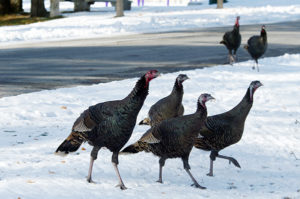 “I don’t see that it is that hard (to catch them),” said McHarg. He suggested setting up a four-foot chicken wire fence in an inward spiral pattern, sprinkling in seeds to lead the birds in, and when they reach the middle, “round them up, toss them in a sack, then into a pick-up and relocate them.”
“I don’t see that it is that hard (to catch them),” said McHarg. He suggested setting up a four-foot chicken wire fence in an inward spiral pattern, sprinkling in seeds to lead the birds in, and when they reach the middle, “round them up, toss them in a sack, then into a pick-up and relocate them.”
McHarg said cost would be minimal, as he was certain residents would volunteer to help. Two other members of the council audience immediately concurred. He went on to suggest a group be formed to further discuss solutions, including the Rod and Gun Club.
“Cost is my alarm bell (in terms of an annual cull),” said Councilor Mike Grey. “Yes they are all over, but I don’t want to saddle the taxpayers with an unwinnable battle.”
Reinhardt noted that she has spoken with other people in Radium (other than those who signed the letter) who find the turkeys intrusive.
“We may need to look at a multi-pronged approach, and also maybe it is time for another survey,” she said. “We also need to look at attractants.”
Kent Kebe said he would also like to see a relocation approach to the turkeys.
“To me, if we talk cull, people will get their backs up,” Kebe said. “There have been turkeys here ever since I have lived here, but only a few, and those ones in north Radium. Now the population has really increased.”
The question of where to relocate the turkeys was also brought up.
Kebe suggested talking to Fish and Wildlife to see if they could suggest a spot, and McHarg noted with communities both north and south of Radium, an east or west location would likely be best.
Beyond being messy and destructive to property, he added, having them in town could also increase and encourage predators, such as bobcats and cougars.
The discussion ended with council agreeing that a group of residents, with guidance from staff, should meet and that a member of council would participate.
Lead image: One of north Radium’s wild turkey population. e-KNOW file photos
e-KNOW
